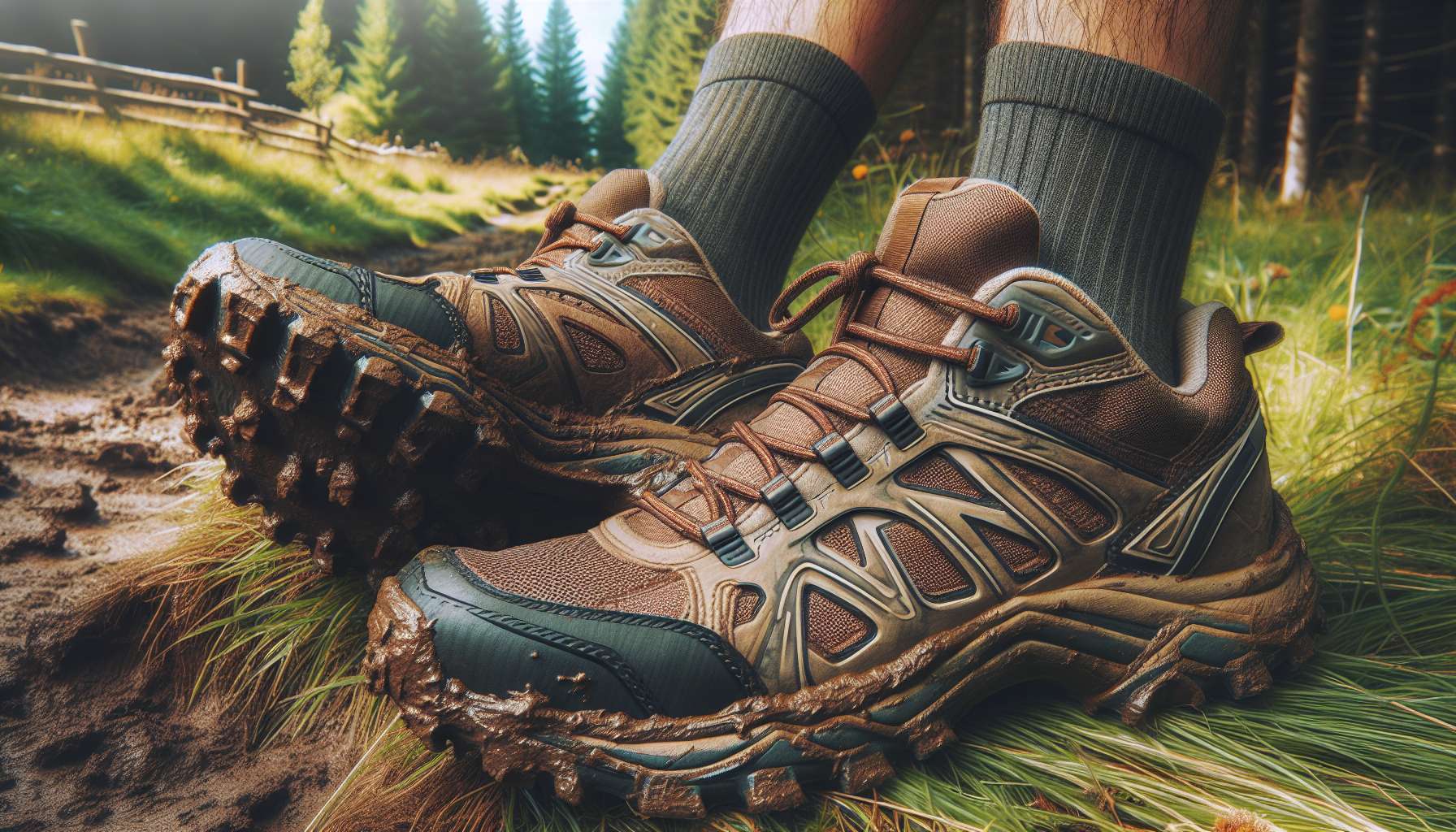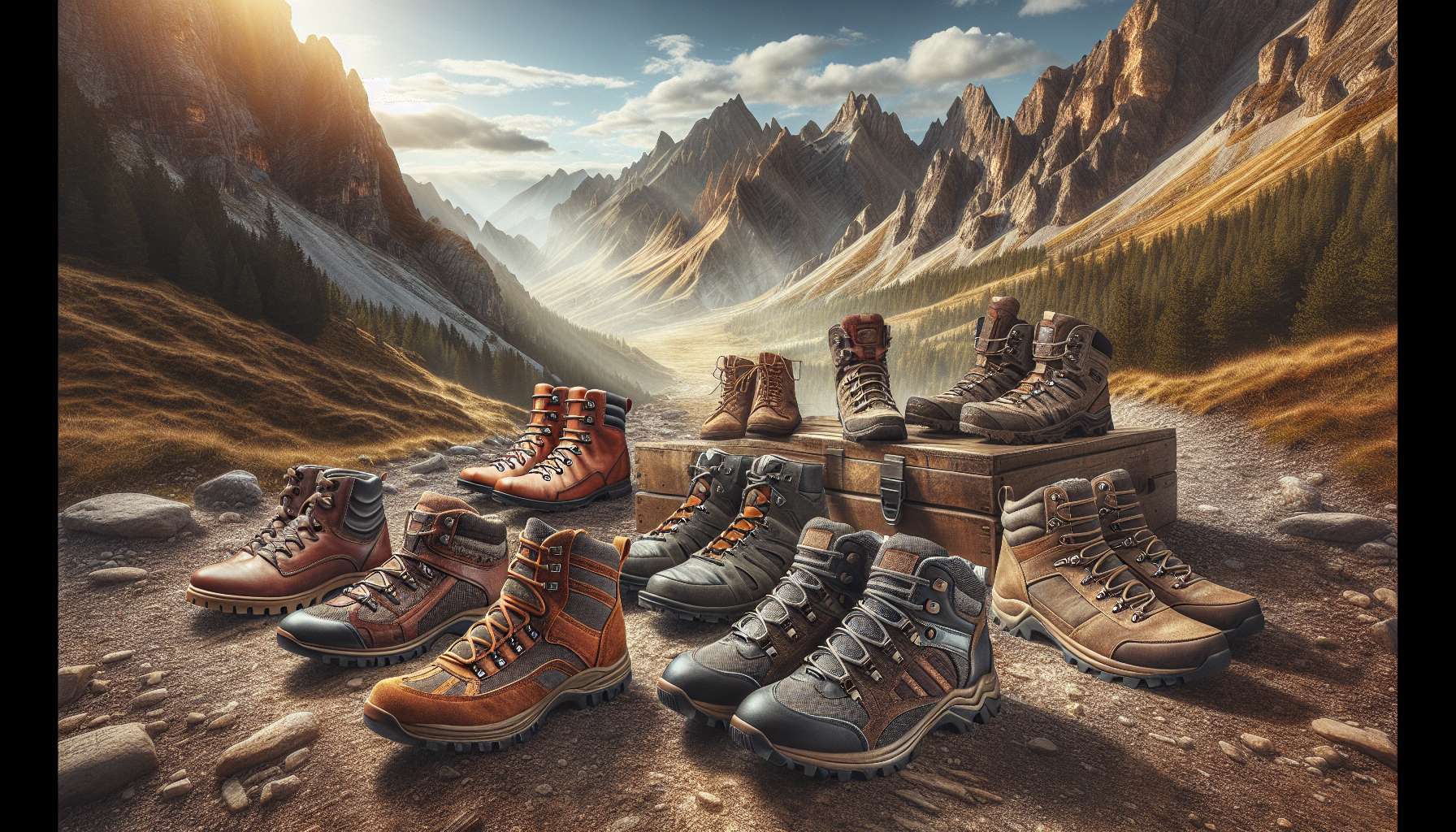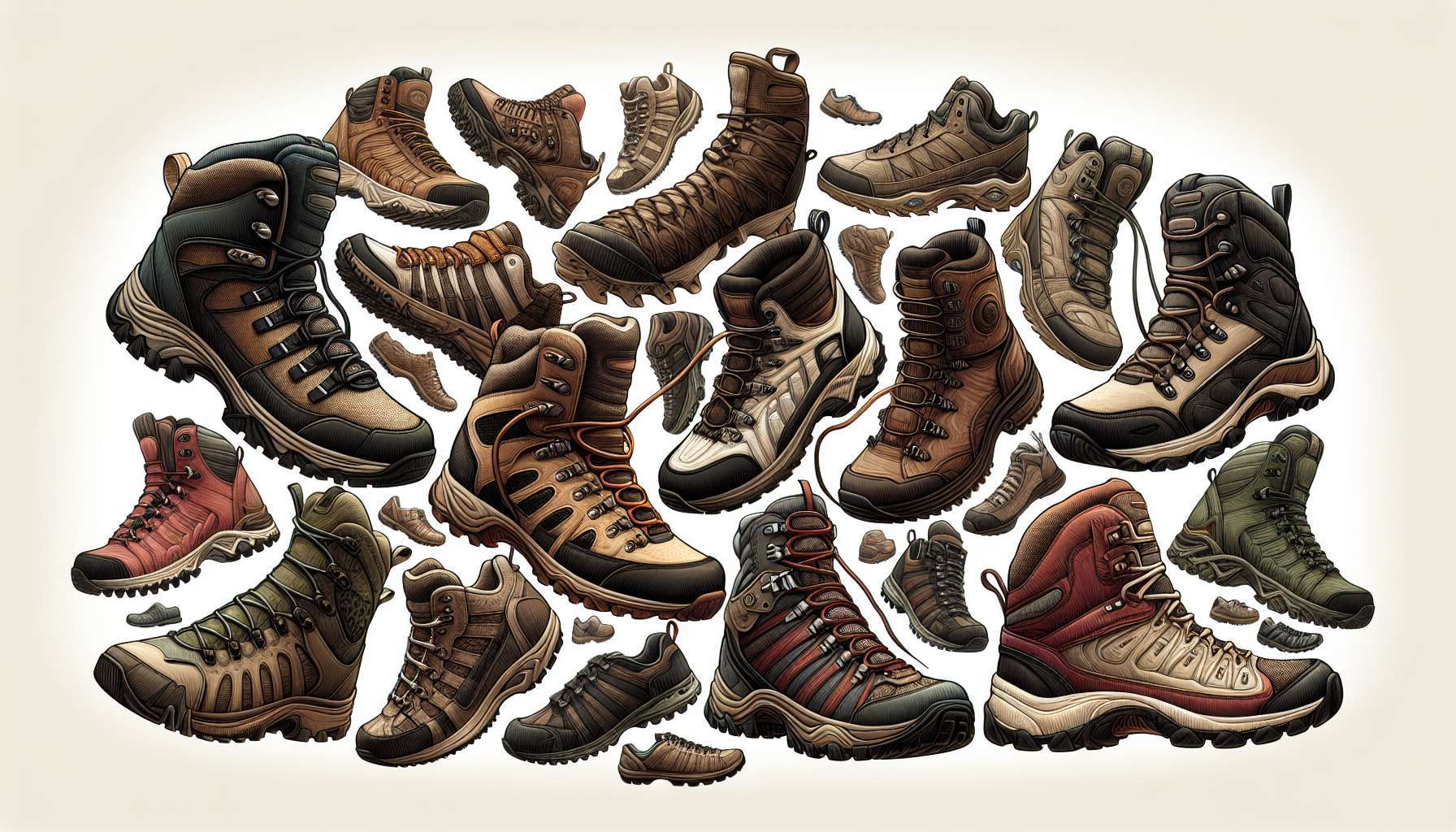Unveiling the Mysteries of Trail Running Shoes
Trail running shoes, with their rugged soles and durable design, are a staple for any outdoor enthusiast looking to conquer rough terrains and challenging trails. These specialized shoes offer support, stability, and protection, making them essential gear for the adventurous runner. But what sets trail running shoes apart from regular running shoes? How do they enhance performance and reduce the risk of injuries on uneven surfaces? In this comprehensive guide, we delve deep into the world of trail running shoes, exploring their unique features, benefits, and the science behind their design. Join us on this journey as we unravel the mysteries of trail running shoes and discover why they are a game-changer for off-road runners.
The Evolution of Trail Running Shoes
Trail running shoes have come a long way since their inception, evolving from simple, basic designs to sophisticated, high-performance footwear. In the early days of trail running, runners often relied on traditional running shoes or hiking boots to navigate rugged paths and rocky trails. However, as the popularity of trail running grew, so did the demand for specialized shoes that could withstand the challenges of off-road terrain.
One of the key milestones in the evolution of trail running shoes was the introduction of Vibram soles in the 1970s. Vibram, a renowned Italian company, revolutionized the shoe industry with its durable, high-traction rubber soles that provided superior grip on slippery surfaces. This innovation paved the way for the development of trail running shoes with rugged outsoles that could handle a variety of terrains, from muddy trails to rocky slopes.
Today, trail running shoes are designed using advanced materials and technologies that offer optimal performance and protection. Brands like Salomon, Merrell, and La Sportiva have become synonymous with top-quality trail running shoes, catering to the needs of both recreational runners and elite athletes. With features like waterproof membranes, protective toe caps, and aggressive tread patterns, modern trail running shoes are built to withstand the toughest conditions and provide maximum comfort and support.
The Anatomy of Trail Running Shoes
Trail running shoes are engineered to provide stability, traction, and protection on uneven terrain, making them a crucial tool for runners who venture off the beaten path. Understanding the key components of trail running shoes can help you choose the right pair for your specific needs and preferences.
1. Outsole
The outsole of a trail running shoe is arguably the most important component, as it determines the shoe’s grip and traction on various surfaces. Trail running shoes typically feature lugged outsoles with deep grooves and aggressive patterns that provide superior traction on mud, rocks, and loose gravel. The lugs help to grip the ground and prevent slippage, allowing you to navigate challenging terrain with confidence.

2. Midsole
The midsole of a trail running shoe is responsible for cushioning and support, absorbing impact forces and reducing the risk of injuries. Most trail running shoes feature cushioned midsoles made of lightweight materials like EVA (ethylene-vinyl acetate) foam or PU (polyurethane) foam. These materials provide a comfortable and responsive ride, ensuring that your feet are protected from the shocks of running on rough terrain.
3. Upper
The upper of a trail running shoe is the part that covers the top of your foot and provides support and protection. Trail running shoe uppers are typically made of breathable mesh or synthetic materials that offer a combination of durability and ventilation. Some trail running shoes also feature waterproof membranes like Gore-Tex to keep your feet dry in wet conditions.
4. Toe Box
The toe box of a trail running shoe refers to the front part of the shoe that houses your toes. A roomy toe box is essential for trail runners, as it allows your toes to splay naturally and provides ample space to accommodate swelling during long runs. A protective toe cap is often added to trail running shoes to shield your toes from rocks, roots, and other obstacles on the trail.
5. Heel Counter
The heel counter of a trail running shoe is a stiff piece of material that wraps around the back of your heel and provides stability and support. A firm heel counter helps to lock your heel in place and prevent excessive movement, reducing the risk of blisters and hot spots. Some trail running shoes also feature a heel pull tab for easy on and off.
Choosing the Right Trail Running Shoes
When it comes to selecting the perfect pair of trail running shoes, there are several factors to consider to ensure a comfortable and enjoyable running experience. Here are some tips to help you choose the right trail running shoes for your needs:
1. Terrain
Consider the type of terrain you will be running on most frequently, as this will influence the tread pattern and outsole design you need. If you primarily run on rocky trails, opt for trail running shoes with aggressive lugs and a durable outsole. For muddy or wet conditions, choose shoes with a waterproof membrane to keep your feet dry and comfortable.
2. Fit
Proper fit is crucial when selecting trail running shoes, as an ill-fitting pair can lead to discomfort and injuries. Make sure there is enough room in the toe box for your toes to move freely, and that the heel counter provides a secure fit without rubbing or slipping. Consider trying on shoes in the late afternoon or evening when your feet are slightly swollen to ensure the best fit.
3. Cushioning
The level of cushioning in trail running shoes can vary, so choose a pair that offers the right balance of comfort and responsiveness for your running style. If you prefer a softer feel underfoot, look for shoes with ample cushioning in the midsole. If you prefer a more minimalist shoe, opt for a lighter and more responsive design with less cushioning.
4. Weight
The weight of trail running shoes can impact your performance and comfort on the trail, so consider the weight of the shoes when making your selection. Lighter shoes are ideal for faster runners and shorter distances, while heavier shoes may provide more stability and support for longer runs or technical terrain.
5. Brand and Reviews
Research different brands and read reviews from other runners to get an idea of the quality and performance of trail running shoes. Brands like Salomon, Brooks, and Altra are known for their high-quality trail running shoes, so consider trying out different brands to find the perfect fit for your feet.
Expert Opinions
To gain further insights into the world of trail running shoes, we consulted with seasoned trail runners and footwear experts to get their take on the importance of wearing the right shoes for off-road running. Here’s what they had to say:
“Having the right trail running shoes can make a world of difference in your performance and enjoyment on the trails,” says Jessica, a veteran trail runner. “I’ve tried various brands and styles over the years, and I’ve found that shoes with a good grip and cushioning are essential for tackling technical terrain and long distances.”
Dr. Patel, a podiatrist and avid trail runner, emphasizes the importance of proper fit and support in trail running shoes. “As a healthcare professional, I see many runners who suffer from foot injuries due to wearing the wrong shoes. It’s essential to choose trail running shoes that provide the right balance of cushioning, stability, and protection to prevent common foot issues like plantar fasciitis and blisters.”
Common Misconceptions
Despite the numerous benefits of trail running shoes, there are some common misconceptions that often deter runners from trying them out. Let’s debunk a few of these myths:
1. Trail running shoes are only for experienced runners.
While trail running shoes are designed for off-road terrain, they are suitable for runners of all levels, from beginners to seasoned veterans. The right pair of trail running shoes can help support your feet and reduce the risk of injuries, making them a valuable investment for runners of any experience level.
2. Trail running shoes are heavy and bulky.
While some trail running shoes may be slightly heavier than traditional running shoes, many brands offer lightweight and agile designs that provide the same level of comfort and support without the extra bulk. Look for trail running shoes with a minimalist design if you prefer a lighter feel underfoot.
3. Trail running shoes are only necessary for extreme terrain.
Even if you primarily run on flat or paved surfaces, trail running shoes can still offer benefits like increased traction, stability, and durability. Consider incorporating trail running shoes into your training regimen to strengthen your feet and ankles and improve your overall running performance.
Comparative Analysis
When comparing trail running shoes to traditional running shoes, several key differences emerge that highlight the unique benefits of each type of footwear:
1. Traction
Trail running shoes are specifically designed to provide superior traction on uneven and slippery surfaces, thanks to their aggressive outsole patterns and deep lugs. Traditional running shoes, on the other hand, are optimized for smooth, flat surfaces like roads and tracks, offering less grip on off-road terrain.
2. Protection
Trail running shoes offer enhanced protection for your feet with features like protective toe caps, durable materials, and rugged outsoles. Traditional running shoes provide cushioning and support for running on hard surfaces, but may not offer the same level of protection against rocks, roots, and other trail obstacles.
3. Durability
Trail running shoes are built to withstand the rigors of off-road running, with durable materials and reinforced construction that can handle the demands of rough terrain. Traditional running shoes are designed for consistent, even surfaces and may not hold up as well when exposed to the challenges of trail running.
FAQs
Here are some frequently asked questions about trail running shoes:
1. Can I use trail running shoes for road running?
While trail running shoes are designed for off-road terrain, they can also be used for road running. However, keep in mind that the aggressive tread and lugged outsoles of trail running shoes may feel less comfortable on smooth surfaces like pavement.
2. How often should I replace my trail running shoes?
It is recommended to replace your trail running shoes every 300-500 miles, depending on the wear and tear. Inspect your shoes regularly for signs of wear, such as worn-out treads, compressed midsoles, or visible damage to the upper material.
Final Thoughts
To wrap things up, trail running shoes are an essential piece of gear for outdoor enthusiasts looking to explore rugged trails and challenging terrain. With their advanced materials, durable construction, and specialized design, trail running shoes offer the support, stability, and protection needed to conquer off-road obstacles and elevate your running experience. Whether you’re a beginner or a seasoned trail runner, investing in a quality pair of trail running shoes can enhance your performance, reduce the risk of injuries, and open up a world of adventure on the trails. So lace up your shoes, hit the trails, and experience the thrill of trail running like never before!




